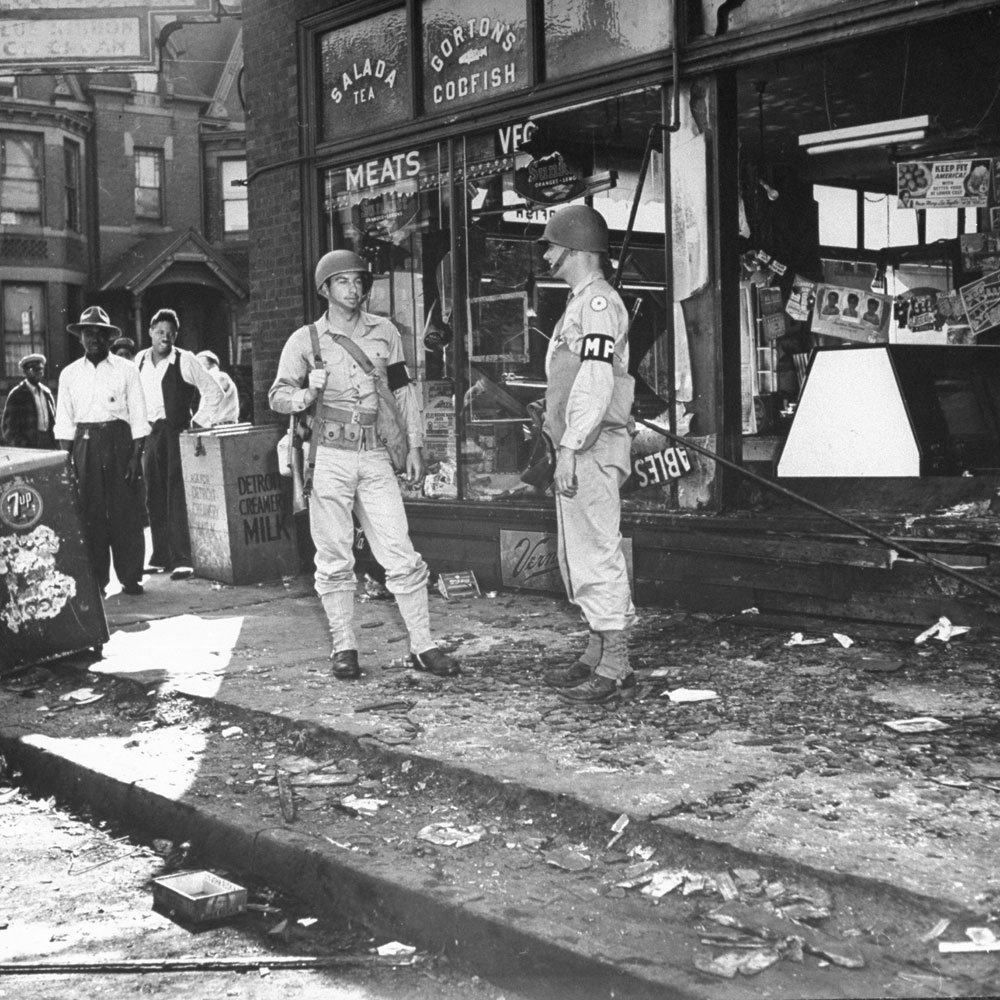
The popular notion that the American home front during World War II was a place of unclouded unity, sacrifice and common purpose is — like most overly simplified characterizations of history — only partially true.
Much of the country did, of course, pull together to form a largely united front during the war, and shared sacrifice (rationing, for example) was a daily reality in the early to mid-1940s. But for millions of people, America in the Forties was a tough place to make a living — especially with the country and much of the rest of the world still reeling from the Great Depression — and if anything can cause simmering tensions to boil over, it’s economic hardship. Add simple, brutal race hatred to the mix, and conditions are ripe for serious strife. Including riots.
[MORE: See all of LIFE.com’s World War II galleries]
In 1943, race riots convulsed cities around the U.S., from Southern California’s infamous “zoot suit riots” in early June to widespread conflicts in St. Louis, New York, Baltimore and elsewhere. But no riots that year were as deadly, and few lasted as long, as the three days of violence that jolted Detroit in late June. Sparked by seemingly minor altercations amid aggressive white resistance to black labor flocking to the city’s factories during America’s ramped-up war effort, the Detroit riots (June 20-22) killed 34 people — 25 African Americans, nine whites — wounded hundreds more and damaged and destroyed property worth millions. What’s more, the street violence at home exposed how thin the veneer of “common purpose” truly was across some segments of society, even as Americans were fighting and dying overseas.
[MORE: See all of TIME’s coverage of Detroit]
Just one example of the country’s racially charged hostilities: In the spring of 1943, more than 20,000 white workers at a Detroit plant that produced engines for bombers and PT boats walked off the job in protest over the promotion of a small handful of black workers — a protest hardly emblematic of a nation seamlessly joining together to battle a common enemy. As a matter of fact, the Axis propaganda machine predictably jumped all over the news of America’s 1943 race riots, citing them as evidence of a corrupt, weak and fatally divided culture. (A few years later, of course, that corrupt, weak, fatally divided culture emerged from the war victorious and more powerful than any other single nation on the planet.)
Seventy years after the Detroit riots, LIFE.com offers a series of photos from a great American city in turmoil — pictures that, whether we want to remember this slice of history or not, remind us that for a significant number of Americans, both then and now, allegiance to race trumps allegiance to country every time.
Note: While this gallery of George Coster’s pictures focuses largely on African Americans rounded up by police (both civil and military) during and after the unrest in Detroit, LIFE devoted nine pages of photos to the riots — some of them graphic, all of them unsettling — in its July 5, 1943, issue, centering almost entirely on white thugs of all ages who perpetrated the greatest share of violence during the riots. See the LIFE page spreads starting on slide 19 in this gallery.
Members of both the black and white communities took part in the riots in Detroit in 1943 — looting, brawling, attacking innocent bystanders. But it’s worth noting that of the 25 African Americans killed during the upheaval, “no white individuals were killed by police,” according to the Detroit Historical Society, “whereas seventeen African American died at the hands of police violence.”
Liz Ronk, who edited this gallery, is the Photo Editor for LIFE.com. Follow her on Twitter @lizabethronk.
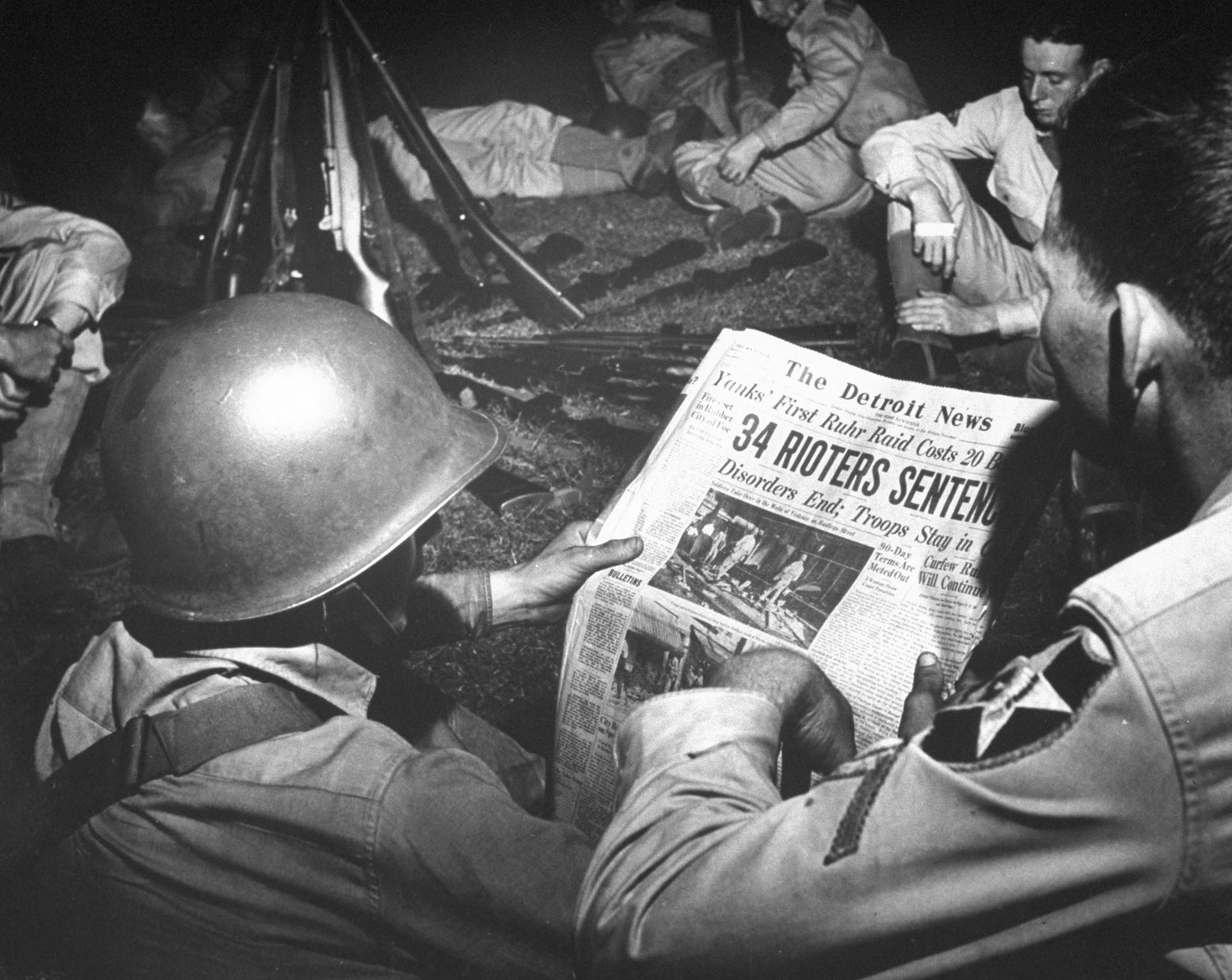

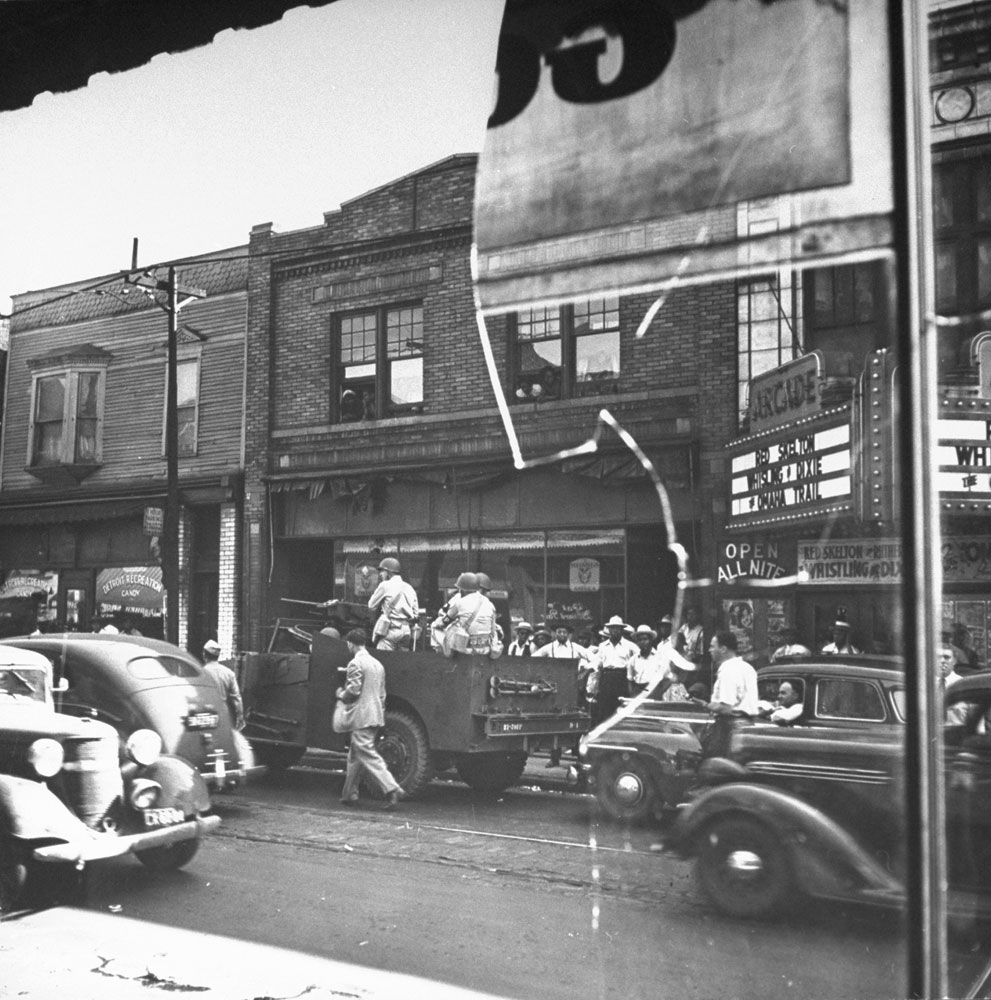

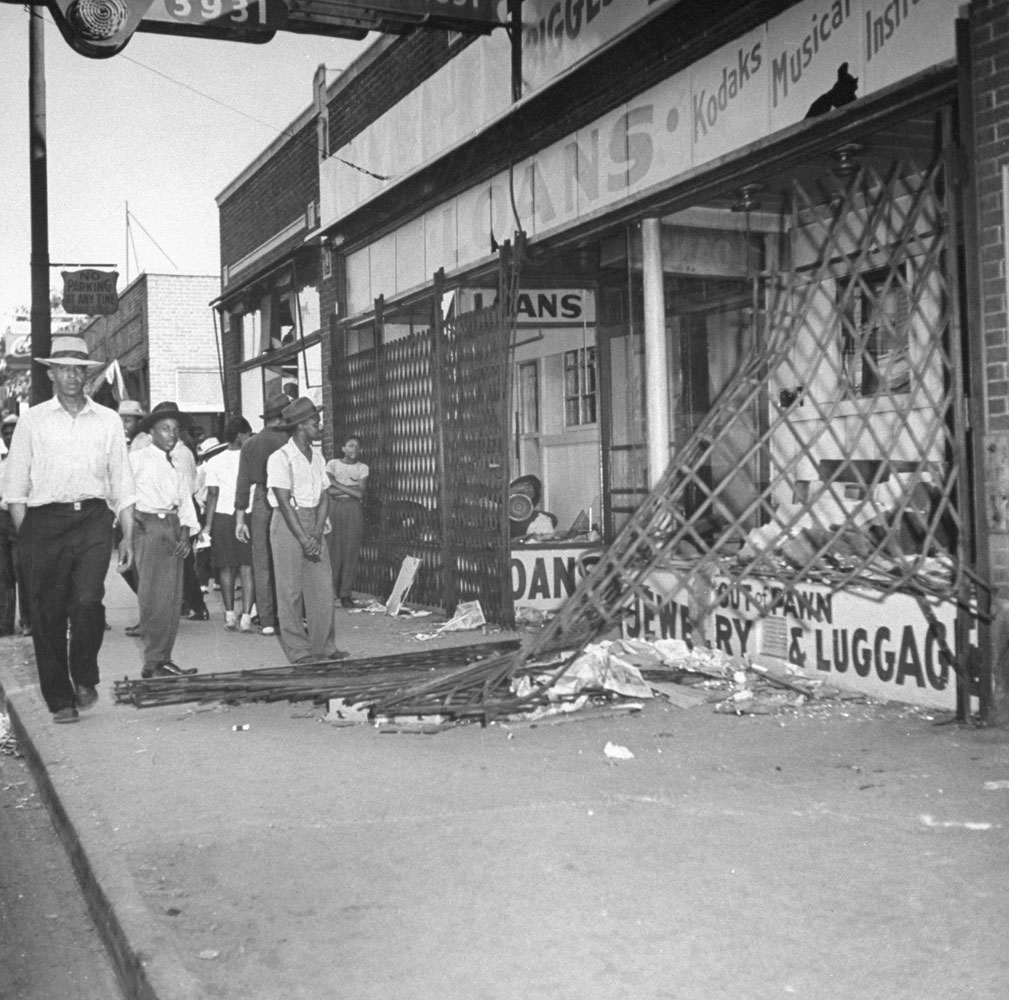
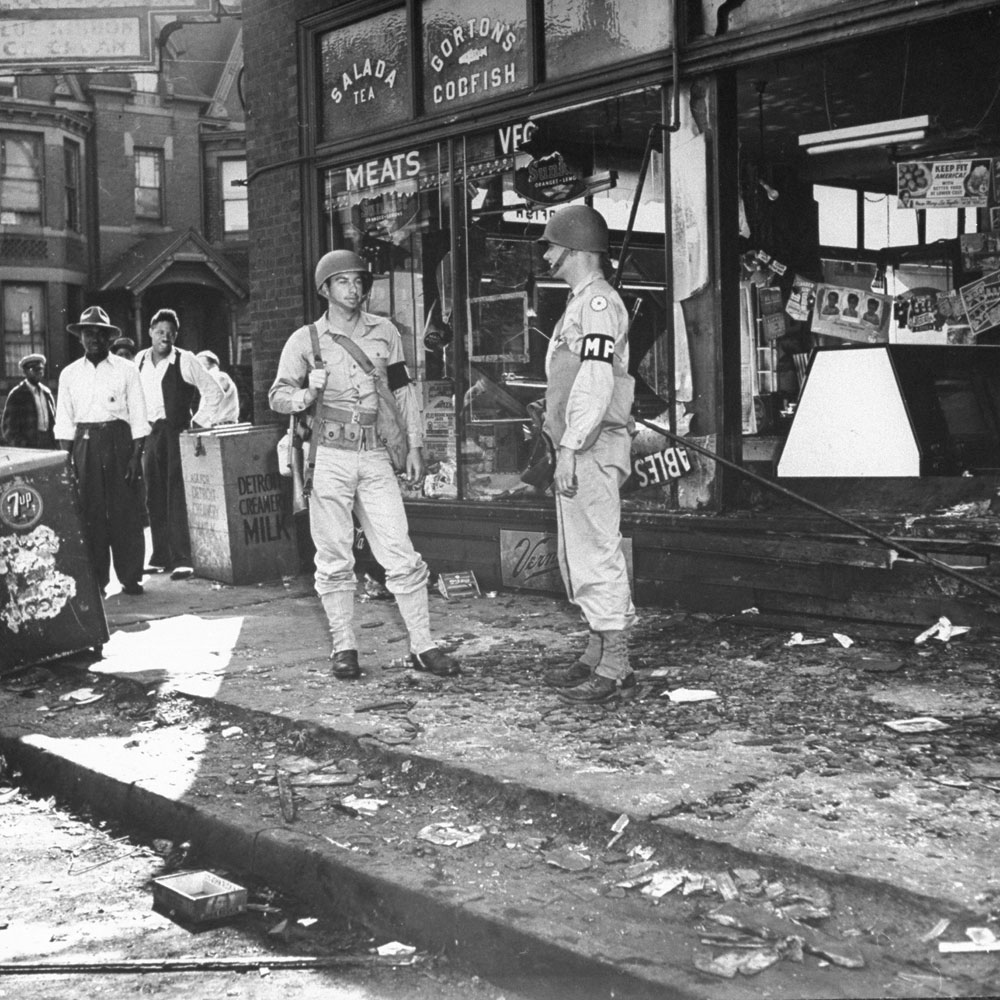


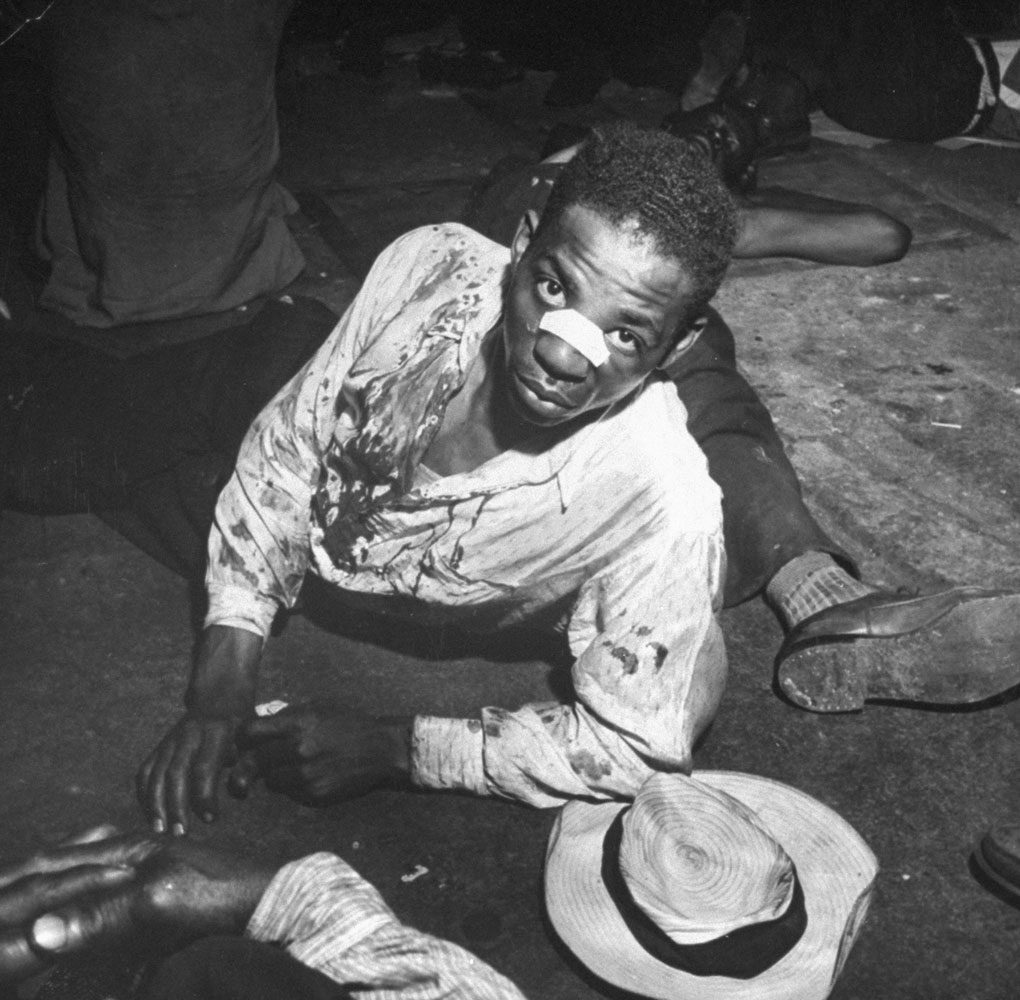



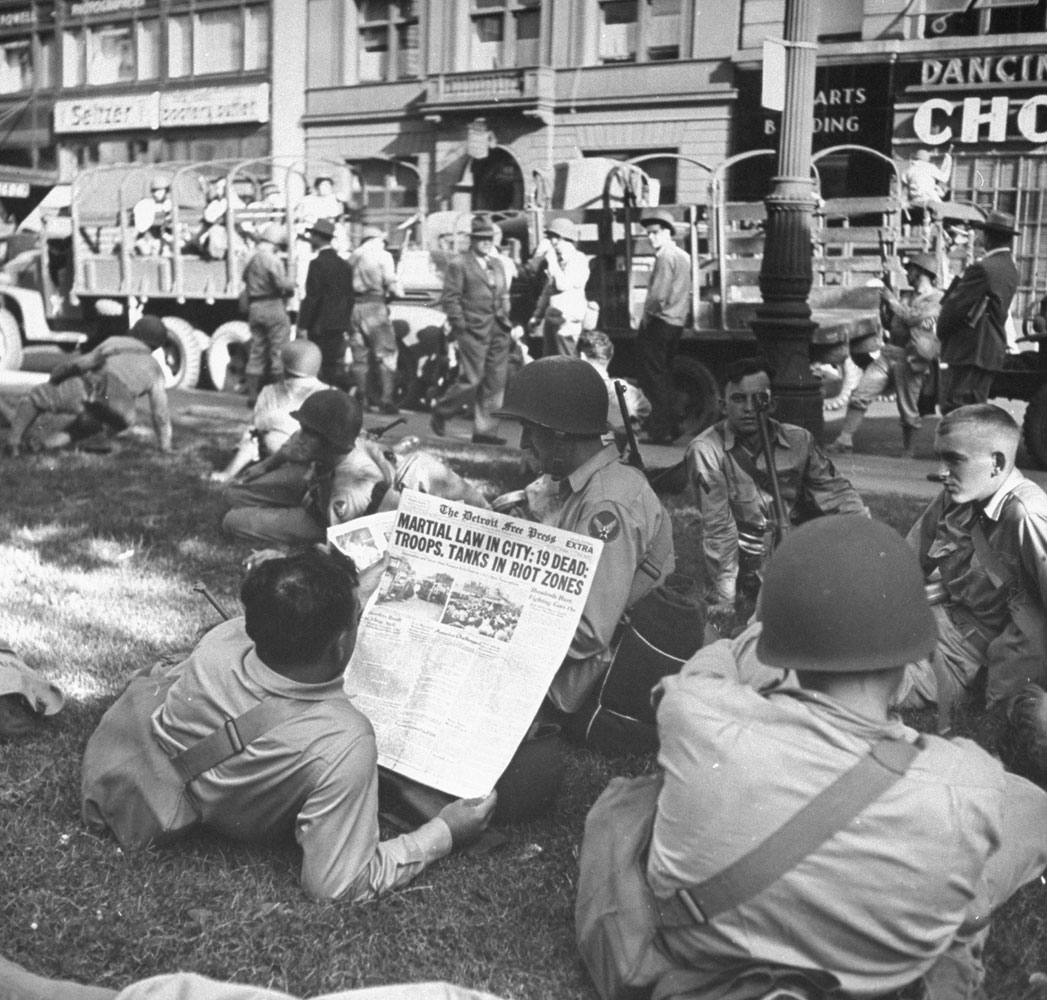






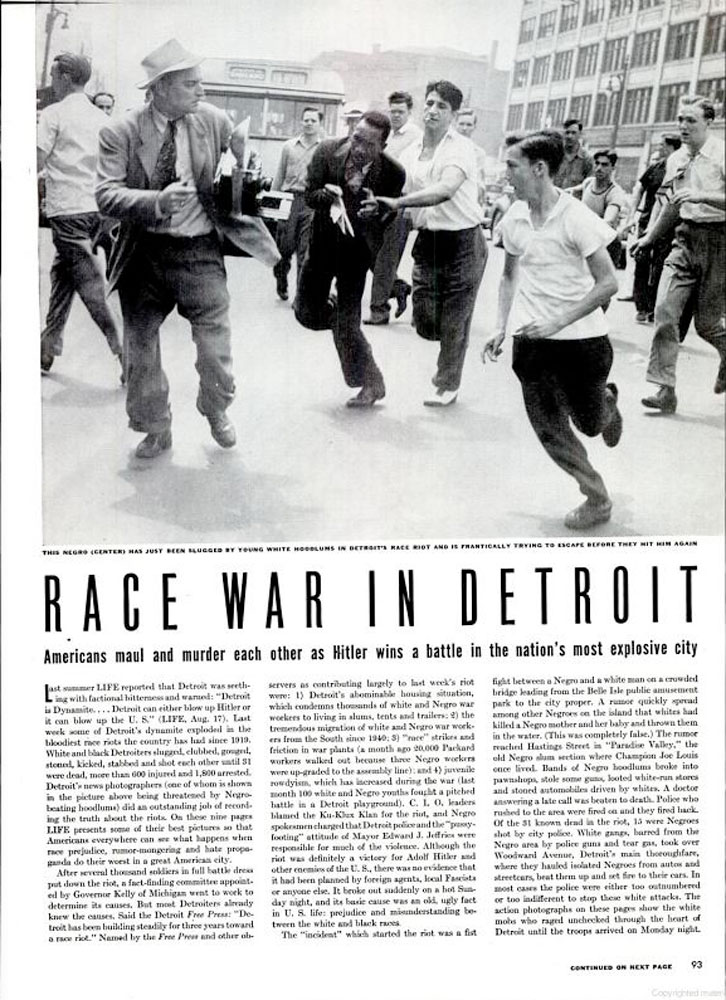

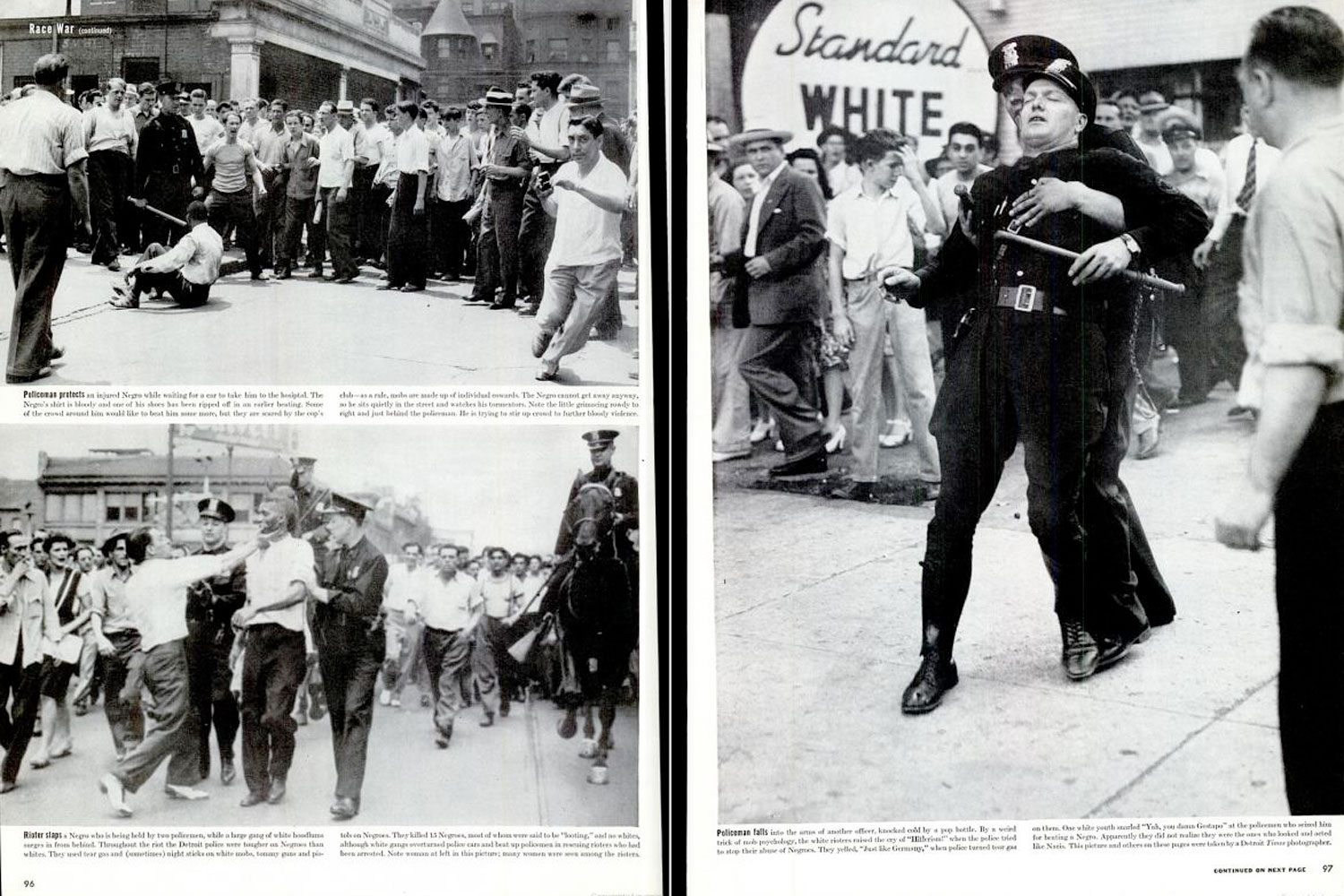

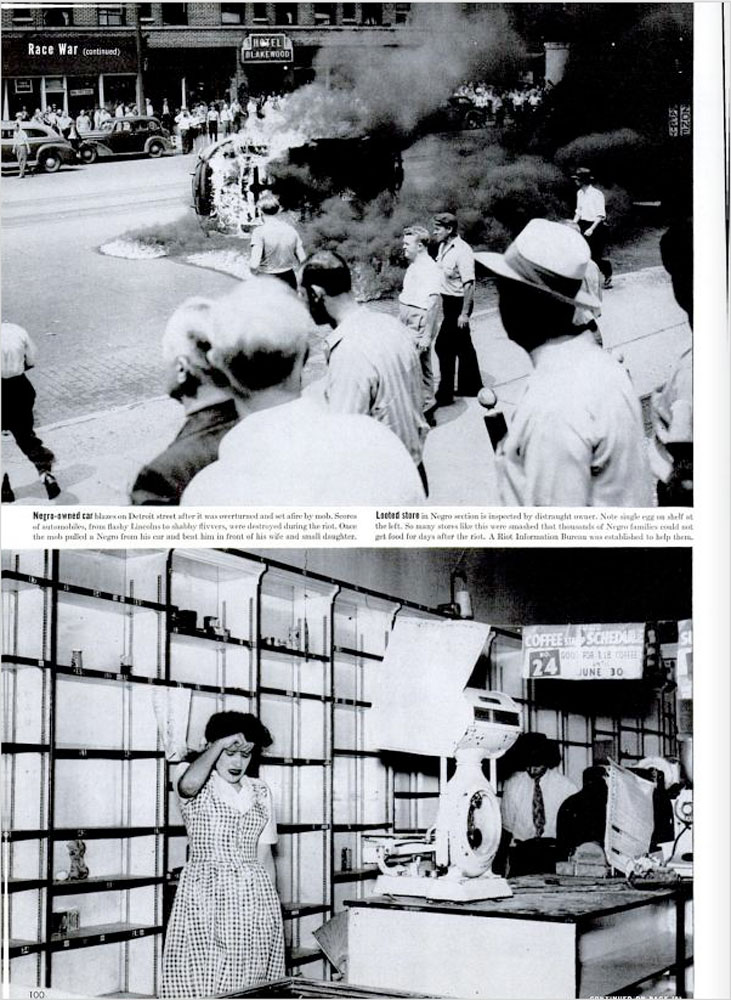

More Must-Reads from TIME
- Donald Trump Is TIME's 2024 Person of the Year
- Why We Chose Trump as Person of the Year
- Is Intermittent Fasting Good or Bad for You?
- The 100 Must-Read Books of 2024
- The 20 Best Christmas TV Episodes
- Column: If Optimism Feels Ridiculous Now, Try Hope
- The Future of Climate Action Is Trade Policy
- Merle Bombardieri Is Helping People Make the Baby Decision
Contact us at letters@time.com